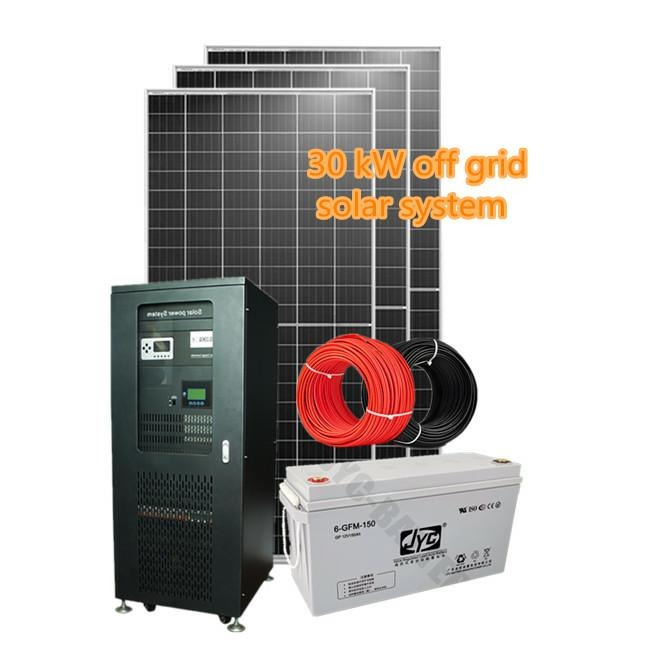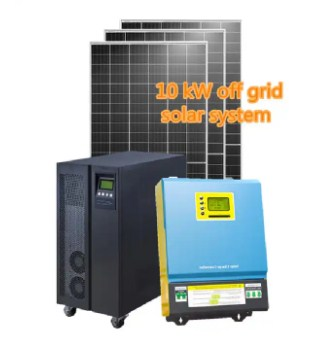The sun’s massive thermal energy makes it an extremely attractive source of energy. This energy can be converted directly into direct current and heat. Solar energy is a clean, abundant and inexhaustible renewable energy available on earth. Solar panels or solar photovoltaic systems using panels (SPV panels) are placed on rooftops or in solar farms so that solar radiation falls on the solar photovoltaic panels to facilitate the reaction that converts solar radiation into electricity.
Solar power can be used to power individual buildings as well as on an industrial scale. When it is used on a small scale, the extra power can be stored in batteries or fed into the grid. Solar power is limitless, the only limit is how profitable we can convert it into electricity. Tiny solar photovoltaic panels power calculators, toys and phone booths.

A solar photovoltaic system converts solar energy into electrical energy, just like a battery converts chemical energy into electrical energy or a car engine converts chemical energy into mechanical energy or an electric motor (in an electric vehicle, EV) converts electrical energy into mechanical energy. SPV cells convert solar energy into electricity. Instead of using the sun’s heat to generate electricity, solar cells generate electricity by interacting with incoming light rays and semiconductor materials.
Electricity can be defined as the flow of electrons. How does a solar photovoltaic system generate this flow? Normally, energy must be provided to move electrons away from the nucleus. Valence electrons (i.e. those in the outer shell of an atom) have the highest energy level of electrons still bound to their parent atom, (because they are farther away from the nucleus than electrons in the inner shell). Complete removal of an electron from an atom requires additional energy, therefore, free electrons have a higher energy level than valence electrons.

Demand for renewable energy sources such as solar and wind power, as well as energy storage solutions, will continue to rise as fossil fuel prices continue to rise and global emissions standards become more stringent.
The word solar refers to the sun. Solar cells are batteries that use solar cells (also known as solar photovoltaic cells or PV cells) to store energy from solar radiation or light energy into electrical energy through the photovoltaic effect. They don’t involve chemical reactions like batteries do. Photovoltaic cells are composed of semiconducting materials that combine some properties of metals with those of insulators, allowing them to convert light into electricity.
When light is absorbed by a semiconductor, the photons can transfer their energy to electrons, creating a flow of electrons. What is current? It is the flow of electrons. This current flows out of the semiconductor to output leads. These leads are connected to the battery or grid through some electronic circuits and inverters to control and generate alternating current.
Grid-interactive or grid-connected (hybrid) solar PV systems with battery storage
This type of solar PV system is connected to the grid and can earn state incentives while also lowering your utility bills. Also, the system has backup power in case of a power outage. A battery-based grid-tied system provides power during a power outage and can store energy for emergency use. Essential loads like lighting and appliances also have backup power when the power goes out. People can also use energy during peak demand times because the energy is stored in the battery pack for later use.
The main disadvantages of such solar photovoltaic systems are higher cost than basic grid-tied systems and lower efficiency. Components are also added. Adding batteries also requires a charge controller to protect them. There must also be a subpanel containing the important loads to be backed up. Not all loads a house uses on the grid are backed up by the system. Critical loads required during power outages. They are isolated into an alternate subpanel.
Photovoltaic power generation system: This system uses solar photovoltaic cells to convert sunlight into electricity. Photovoltaic power generation systems include solar photovoltaic panels, battery packs, inverters, and grid connections. It can convert solar energy into electricity that can be used by a home or commercial building, or it can inject excess electricity into the grid.

A photovoltaic power generation system is a system that uses solar photovoltaic cells to convert solar energy into electrical energy. Below are some of the advantages of photovoltaic power generation systems:
Renewable energy: Solar energy is a kind of renewable energy. The photovoltaic power generation system uses solar energy without fuel, will not be exhausted or produce emissions, and is environmentally friendly.
Low maintenance costs: Photovoltaic power generation systems usually have no moving parts, so maintenance costs are low. Simply clean your solar panels regularly to ensure they are operating efficiently.
Distributed power generation: Photovoltaic power generation systems can be installed in various places, such as roofs, open spaces, or building exterior walls. This makes the generation process more distributed, reducing energy transmission losses and the need to rely on traditional grids.
Long life: Photovoltaic panels have a long service life, usually lasting for more than 25 years, which ensures the durability and reliability of the system.
Potential economic benefits: After installing a photovoltaic power generation system, economic benefits can be realized by selling excess electricity to the grid or by reducing electricity bills.






